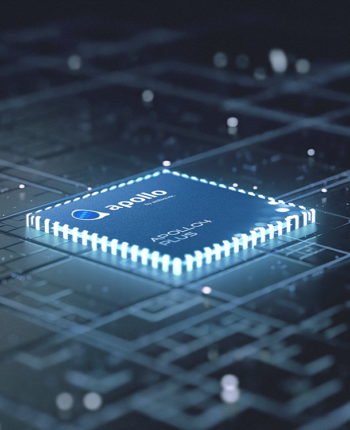Practical ultra-low power endpointai Fundamentals Explained
Practical ultra-low power endpointai Fundamentals Explained
Blog Article

Hook up with much more products with our big choice of very low power interaction ports, which include USB. Use SDIO/eMMC for additional storage that will help meet your software memory necessities.
Generative models are One of the more promising ways towards this target. To train a generative model we initial accumulate a large amount of data in some area (e.
Nonetheless, different other language models for instance BERT, XLNet, and T5 possess their very own strengths In relation to language understanding and building. The right model in this example is set by use case.
Most generative models have this basic set up, but differ in the small print. Listed here are 3 popular examples of generative model strategies to provide you with a way with the variation:
Prompt: Gorgeous, snowy Tokyo town is bustling. The digicam moves with the bustling town Avenue, subsequent a number of persons having fun with the beautiful snowy climate and procuring at close by stalls. Magnificent sakura petals are flying through the wind together with snowflakes.
These visuals are examples of what our visual world looks like and we refer to those as “samples in the legitimate knowledge distribution”. We now assemble our generative model which we wish to coach to make pictures like this from scratch.
Prompt: Photorealistic closeup video clip of two pirate ships battling one another since they sail within a cup of coffee.
The creature stops to interact playfully with a bunch of very small, fairy-like beings dancing close to a mushroom ring. The creature appears up in awe at a sizable, glowing tree that is apparently the center with the forest.
AI model development follows a lifecycle - first, the info that can be utilized to prepare the model needs to be collected and organized.
We’re educating AI to know and simulate the Bodily environment in movement, Using the target of training models that assist folks address difficulties that demand real-entire world interaction.
The end result is the fact TFLM is difficult to deterministically improve for Strength use, and those optimizations tend to be brittle (seemingly inconsequential transform bring about substantial Vitality efficiency impacts).
This is analogous to plugging the pixels of your impression right into a char-rnn, even so the RNNs run both horizontally and vertically around the picture rather than merely a 1D sequence of people.
AI has its possess smart detectives, generally known as selection trees. The decision is made using a tree-composition exactly where they review the info and split it down into achievable outcomes. These are perfect for classifying info or encouraging make decisions inside a sequential manner.
If that’s the situation, it is actually time researchers centered not just on the size get more info of a model but on what they do with it.
Accelerating the Development of Optimized AI Features with Ambiq’s neuralSPOT
Ambiq’s neuralSPOT® is an open-source AI developer-focused SDK designed for our latest Apollo4 Plus system-on-chip (SoC) family. neuralSPOT provides an on-ramp to the rapid development of AI features for our customers’ AI applications and products. Included with neuralSPOT are Ambiq-optimized libraries, tools, and examples to help jumpstart AI-focused applications.
UNDERSTANDING NEURALSPOT VIA THE BASIC TENSORFLOW EXAMPLE
Often, the best way to ramp up on a new software library is through a comprehensive example – this is why neuralSPOt includes basic_tf_stub, an illustrative example that leverages many of neuralSPOT’s features.
In this article, we walk through the example block-by-block, using it as a guide to building AI features using neuralSPOT.
Ambiq's Vice President of Artificial Intelligence, Carlos Morales, went on CNBC Street Signs Asia to discuss the power consumption of AI and trends in endpoint devices.
Since 2010, Ambiq has been a leader in ultra-low power semiconductors that enable endpoint devices with more data-driven and AI-capable features while dropping the energy requirements up to 10X lower. They do this with the patented Subthreshold Power Optimized Technology (SPOT ®) platform.
Computer inferencing is complex, and for endpoint AI to become practical, these devices have to drop from megawatts of power to microwatts. This is where Ambiq has the power to change industries such as healthcare, agriculture, and Industrial IoT.
Ambiq Designs Low-Power for Next Gen Endpoint Devices
Ambiq’s VP of Architecture and Product Planning, Dan Cermak, joins the ipXchange team at CES to discuss how manufacturers can improve their products with ultra-low power. As technology becomes more sophisticated, energy consumption continues to grow. Here Dan outlines how Ambiq stays ahead of the curve by planning for energy requirements 5 years in advance.
Ambiq’s VP of Architecture and Product Planning at Embedded World 2024
Ambiq specializes in ultra-low-power SoC's designed to make intelligent battery-powered endpoint solutions a reality. These days, just about every endpoint device incorporates AI features, including anomaly detection, speech-driven user interfaces, audio event detection and classification, and health monitoring.
Ambiq's ultra low power, high-performance platforms are ideal for implementing this class of AI features, and we at Ambiq are dedicated to making implementation as easy as possible by offering open-source developer-centric toolkits, software libraries, and reference models to accelerate AI feature development.

NEURALSPOT - BECAUSE AI IS HARD ENOUGH
neuralSPOT is an AI developer-focused SDK in the true sense of the word: it includes everything you need to get your AI model onto Ambiq’s platform. You’ll find libraries for talking to sensors, managing SoC peripherals, and controlling power and memory configurations, along with tools for easily debugging your model from your laptop or PC, and examples that tie it all together.
Facebook | Linkedin | Twitter | YouTube Report this page